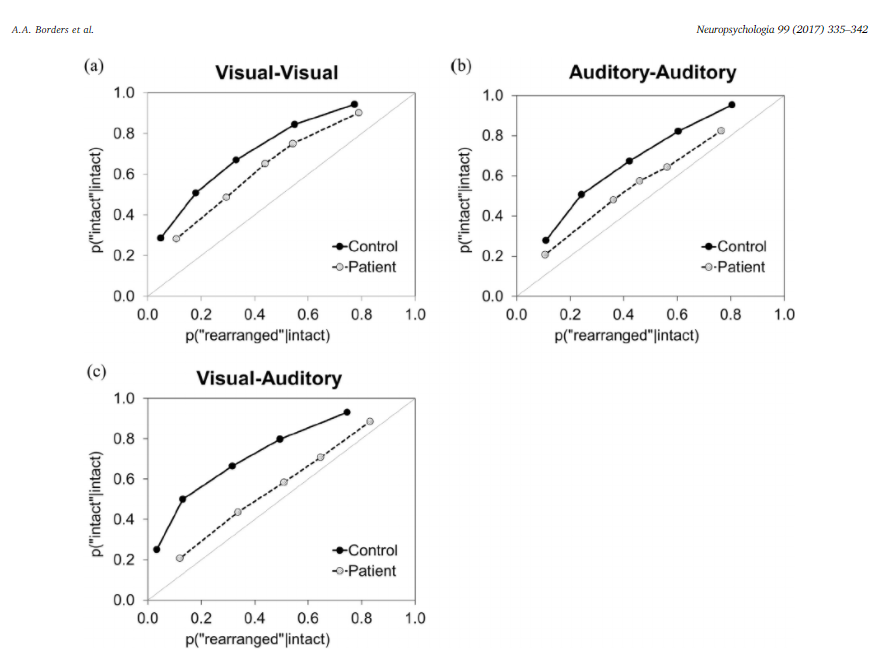Receiver Operating Characteristics (ROCs)
Receiver operating characteristics (ROCs) are used to examine the relationship between correctly recognized target items (i.e., the hit rate) and incorrectly recognized lure items (i.e., the false alarm rate) across variations in response criterion. In a test of item recognition, the hit rate is equal to the probability of correctly accepting an old item as old, and the false alarm rate is equal to the probability of incorrectly accepting a new item as old. When viewing an ROC, the leftmost point on each function reflects the hit rate plotted against the false alarm rate when adopting a strict response criterion, and each subsequent point reflects performance at a more and more relaxed criterion.
ROC analysis has been used to help understand the processes involved in tasks like the remember/know procedure, the process dissociation procedure, and relational recognition tasks. In addition, ROC analysis has been useful in understanding the memory changes associated with a wide variety of neurological and psychiatric disorders, and has been applied in studies of rats to understand the effects of hippocampal damage on recognition. Dissociation between slope and intercept measures in ROCs have indicated that item recognition requires no less than two functionally independent memory components or processes.
For a comprehensive summary of ROC applications in recognition memory, please see the paper : Yonelinas, A. P., & Parks, C. M. (2007). Receiver operating characteristics (ROCs) in recognition memory: a review. Psychological bulletin, 133(5), 800. [PDF]

Dual Process ROC Model
This Shiny app, created by Maureen Ritchey, demonstrates the dual process model of recognition memory (Yonelinas, 1994) and the influence of familiarity and recollection on receiver operating characteristic (ROC) curves.
ROC Toolbox
ROC Toolbox is a Matlab toolbox created by Josh Koen. The ROC toolbox allows for various different confidence scales and currently includes the models commonly used in recognition memory and perception: (1) the unequal variance signal detection (UVSD) model, (2) the dual process signal detection (DPSD) model, and (3) the mixture signal detection (MSD) model. For each model fit to a given data set the ROC toolbox plots summary information about the best fitting model parameters and various goodness-of-fit measures.
More information can be found in the paper : Koen, J. D., Barrett, F. S., Harlow, I. M., & Yonelinas, A. P. (2016). The ROC Toolbox: A toolbox for analyzing receiver-operating characteristics derived from confidence ratings. Behavior Research Methods, 1-8. [PDF]
DPSDSSE.xls
DPSDSSE is an excel spreadsheet that can be used to fit 6-point ROCs to the dual process signal detection model in order to derive estimates of recollection and familiarity
PDPSolve.xls
PDPSolve is an excel spreadsheet that can be used to incorporate false alarm rates into the process dissociation procedure to estimate recollection and familiarity given inclusion and exclusion performance for old and new items.
